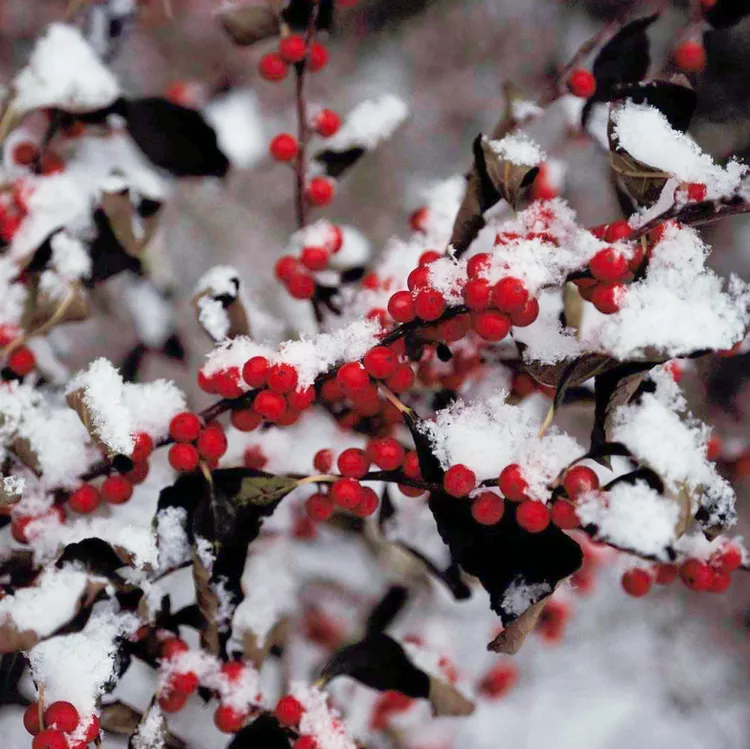5 Smart Tips for Protecting Shrubs from Winter Damage

Shrubs are garden workhorses, providing visual structure, colorful flowers and foliage, and wildlife habitat year-round, even in winter. But the coldest months of the year can be the most challenging for these plants thanks to sudden frigid blasts, hit-and-miss moisture, and hungry critters. Winter damage usually becomes evident the following spring, when shrubs are already in recovery mode or even dying. That's why it's best to take some time in the fall to protect your shrubs from snow, ice, drying winds, and other harsh conditions with these easy winter care tips. In return, your shrubs will reward you with lush, healthy growth as the weather warms up again.
1. Choose Hardy Shrub Varieties
The best way to increase your shrubs' chances of surviving a cold winter is to select plants that are suited to your climate. When selecting shrubs, trees, and other plants, check your hardiness zone and other required growing conditions to get the best possible plant for your location. If you have a shrub that regularly struggles through winter, consider replacing it with a species that is more suited to the unique growing conditions of your landscape. Begin your search with plants that are native to your area.
2. Keep Your Plants Well-Watered
Healthy and adequately hydrated plants have the best chance of surviving winter. Water is often the most limited resource for growth and one that you can supply with relative ease. Water shrubs deeply in fall, especially if moisture has been scarce during the growing season. Supplemental water will encourage strong root growth, which is the foundation of a strong, healthy plant, even after the stems have gone dormant. Aim to apply enough water to moisten the soil 8 to 10 inches below the surface once a week until the ground freezes.
3. Insulate Roots from Temperature Extremes
Newly planted shrubs and those that are sensitive to cold temperatures in your area need extra protection at the soil level. Snow naturally helps insulate the plant's root zone and moderate soil temperature, but you can't count on a consistent 12-inch layer of white every year. Spread a 4-inch layer of mulch around your shrubs to create a blanket of protection. Shredded bark, leaves, straw, or compost are all good mulch choices. Remove the mulch at the first signs of growth in spring.
4. Prevent Critter Damage
Hungry deer, rabbits, mice, and all their relatives can turn a shrub into a winter buffet when food sources are in short supply across the landscape. Unfortunately, no shrubs are safe from animal damage during particularly harsh winters. The best tactic is to fence especially vulnerable plants, such as arborvitae and yews. Use a barrier around valuable or sentimental landscape plants, too.
Fencing material varies depending on the critters you are trying to keep at bay. Rabbits, mice, and other small rodents can be shut out with a cylinder of ¼-inch mesh hardware cloth ($14, The Home Depot) wrapped around the shrub. Be sure your barrier extends at least 24 inches above the anticipated snow line. For added protection, bury the bottom edge of the hardware cloth a few inches in the ground to prevent animals from burrowing under it to access the shrub. If you want to keep deer away, you'll need a fence at least 8 feet tall.
Liquid repellents can keep deer and other animals away when applied frequently. Products made from strong-smelling egg solids, predator urine, and slaughterhouse waste are the most effective, but if you'd like to spare your own nose, you might not want to use them too close to walkways or outdoor seating areas. For best results with repellents, begin applying them early in the season and reapply after rain or snow.
5. Protect Shrubs from Winter Winds
Broadleaf evergreen shrubs, such as rhododendrons and boxwood are especially susceptible to drying winter winds. Strong gusts of freezing air can cause the plants' leaves or needles to lose water and eventually turn brown. The water loss can be extreme enough to severely damage or kill a shrub.
Creating a temporary windbreak around vulnerable plants will help. For larger shrubs, drive a few stakes into the ground around the plant in fall. Wrap the stakes with burlap or canvas cloth. Never use plastic; it can cause damaging temperature fluctuations. For smaller shrubs, a plant cover is a simple solution.